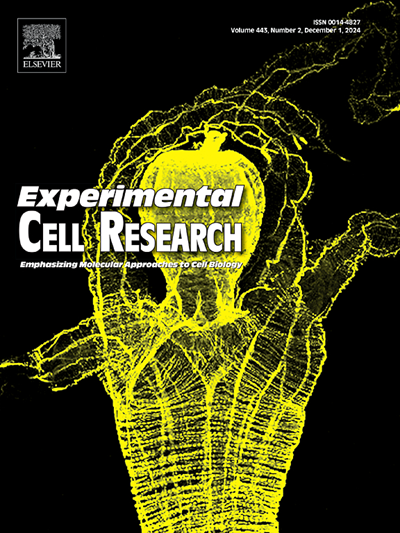ETS1 modulates ferroptosis to affect the process of myocardial ischemia-reperfusion injury via PIM3
IF 3.3
3区 生物学
Q3 CELL BIOLOGY
引用次数: 0
Abstract
Myocardial ischemia-reperfusion injury (MIRI) is a common complication of cardiovascular disease and its pathogenesis remains unclear. ETS1 (E26 transformation-specific sequence-1) is a transcription factor that plays an important regulatory role in vascular development and generation. Therefore, this study aims to explore the role of ETS1 in MIRI and its potential molecular mechanisms. An OGD/R-induced H9C2 cardiomyocyte model was established, and cell viability was determined by CCK8 and changes in SOD, MDA and GSH levels by ELISA; expression of ETS1, PIM3 and ferroptosis-related indices were determined by immunofluorescence, Western blot and qPCR; at the same time, a mouse MIRI model was established to assess changes in myocardial injury and changes in ferroptosis after knockdown of ETS1. In the OGD/R-induced H9C2 cell model, cell viability was significantly lower than that of the control group, and the level of intracellular ferroptosis was significantly enhanced. Further research has revealed that in the OGD/R-induced H9C2 model, the expression of ETS1 is significantly upregulated. Knockdown of ETS1 can reverse the myocardial cell injury induced by OGD/R. Mechanistically, ETS1 promotes the progression of MIRI by targeting and regulating PIM3, thereby exacerbating ferroptosis. Additionally, in a mouse MIRI model, the knockdown of ETS1 significantly enhances the expression of GPX4, SLC7A11, and FTH1 proteins, inhibits the ferroptosis process, and thereby improves MIRI in mice. The research results indicate that ETS1 promotes the MIRI process through regulating ferroptosis of cardiomyocytes mediated by PIM3. This discovery provides important scientific evidence for further elucidating the mechanisms underlying MIRI and developing therapeutic strategies.
求助全文
约1分钟内获得全文
求助全文
来源期刊

Experimental cell research
医学-细胞生物学
CiteScore
7.20
自引率
0.00%
发文量
295
审稿时长
30 days
期刊介绍:
Our scope includes but is not limited to areas such as: Chromosome biology; Chromatin and epigenetics; DNA repair; Gene regulation; Nuclear import-export; RNA processing; Non-coding RNAs; Organelle biology; The cytoskeleton; Intracellular trafficking; Cell-cell and cell-matrix interactions; Cell motility and migration; Cell proliferation; Cellular differentiation; Signal transduction; Programmed cell death.
 求助内容:
求助内容: 应助结果提醒方式:
应助结果提醒方式:


